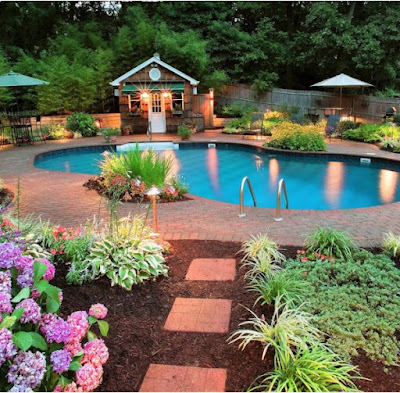7 Things to Know Before Installing a Sprinkler System in St. Augustine
If you're a homeowner in St. Augustine, keeping your lawn green and healthy is likely one of your top priorities. The Florida sun can be intense, and without the right irrigation system, your grass, plants, and flowers can quickly dry out. Installing a sprinkler system in St. Augustine is a great solution, but there are a few things you should know before getting started. Whether you're doing it yourself or hiring a professional, being informed can save you time, money, and a lot of stress.
Here are 7 important things to know before installing a sprinkler system in St. Augustine:
1. Know Your Lawn’s Watering Needs
Not all lawns are the same. Before installing a sprinkler system St. Augustine, you need to understand the type of soil you have, the kind of grass you’re growing, and how much sunlight your yard receives. For example, St. Augustine grass, which is popular in Florida, needs frequent watering during hot months but can tolerate less water in cooler seasons. Sandy soil, common in this area, drains quickly, which means your sprinkler system may need to run longer or more frequently.
Take note of shaded areas too. These spots usually need less water than areas that get full sun all day. Planning your sprinkler zones based on water needs will help avoid overwatering or underwatering your lawn.
2. Check Local Regulations and Water Restrictions
Before you install a sprinkler system in St. Augustine, it’s essential to check city or county regulations. The city of St. Augustine may have rules about when and how often you can water your lawn, especially during dry seasons or droughts. Some neighborhoods or HOAs (homeowners associations) also have guidelines for water usage.
In some cases, permits might be required for installing a new irrigation system. Ignoring these rules can result in fines, or you might have to redo your system. Always check with the St. Johns County utility department or your local water authority before beginning your installation.
3. Plan Your Sprinkler Zones Properly
Efficient sprinkler systems work by dividing your yard into zones. Each zone is controlled separately, allowing different areas of your lawn to get the right amount of water. For example, flower beds, grassy lawns, and shady spots may each be separate zones.
When installing a sprinkler system in St. Augustine, make sure you plan these zones carefully. Group similar plant types together and avoid mixing sunny and shady areas in the same zone. This way, you’ll avoid wasting water and ensure that every part of your landscape stays healthy.
4. Choose the Right Type of Sprinkler Heads
There are different types of sprinkler heads to choose from—rotary heads, fixed spray heads, and drip irrigation, just to name a few. The type you choose depends on the size and shape of your lawn, your water pressure, and your landscaping.
For larger open areas, rotary heads that spin and cover a wide radius might be ideal. For smaller areas, fixed spray heads are more precise. Drip systems work best for garden beds and shrubs. When choosing the right system for your sprinkler system in St. Augustine, make sure it matches your yard’s layout and plant types.
5. Consider a Smart Sprinkler Controller
Modern sprinkler systems now come with smart controllers that adjust watering schedules based on weather forecasts, rainfall, and soil moisture levels. This is a great feature to have in a climate like St. Augustine’s, where sudden rain showers are common.
A smart controller can help save water, lower your utility bills, and prevent overwatering. When installing your sprinkler system in St. Augustine, ask your installer about integrating a smart system. It may cost a little more upfront but will save money and water in the long run.
6. Account for Future Maintenance
Like any system in your home, sprinkler systems need regular maintenance to keep working efficiently. Heads can clog or break, pipes can leak, and controllers might need updates. When choosing your sprinkler system in St. Augustine, pick components that are durable and easy to replace if needed.
Also, think about accessibility. Make sure your system is designed so that you or a technician can easily reach pipes, valves, and heads. Investing in quality parts and proper installation will reduce the need for frequent repairs.
7. Hire a Licensed Professional (If Needed)
While DIY sprinkler systems are available, a poorly installed system can lead to wasted water, damaged plants, and costly repairs. Hiring a licensed irrigation contractor in St. Augustine can help ensure your system is installed correctly and up to code.
A professional will evaluate your landscape, measure your water pressure, plan the zones, and install the system using the right tools and techniques. They’ll also guide you through any necessary permits and inspections. If you're unsure about doing it yourself, hiring a local expert for your sprinkler system in St. Augustine might be the better option.
Final Thoughts
Installing a sprinkler system in St. Augustine can do wonders for your lawn, garden, and overall curb appeal. But before you jump in, it’s important to do a little homework. From understanding your soil to checking local rules, every step matters. Take the time to plan properly, choose the right equipment, and consider long-term maintenance. Whether you go the DIY route or work with a professional, the goal is the same: a beautiful, well-watered lawn that thrives in Florida’s warm, sunny climate.




Comments
Post a Comment